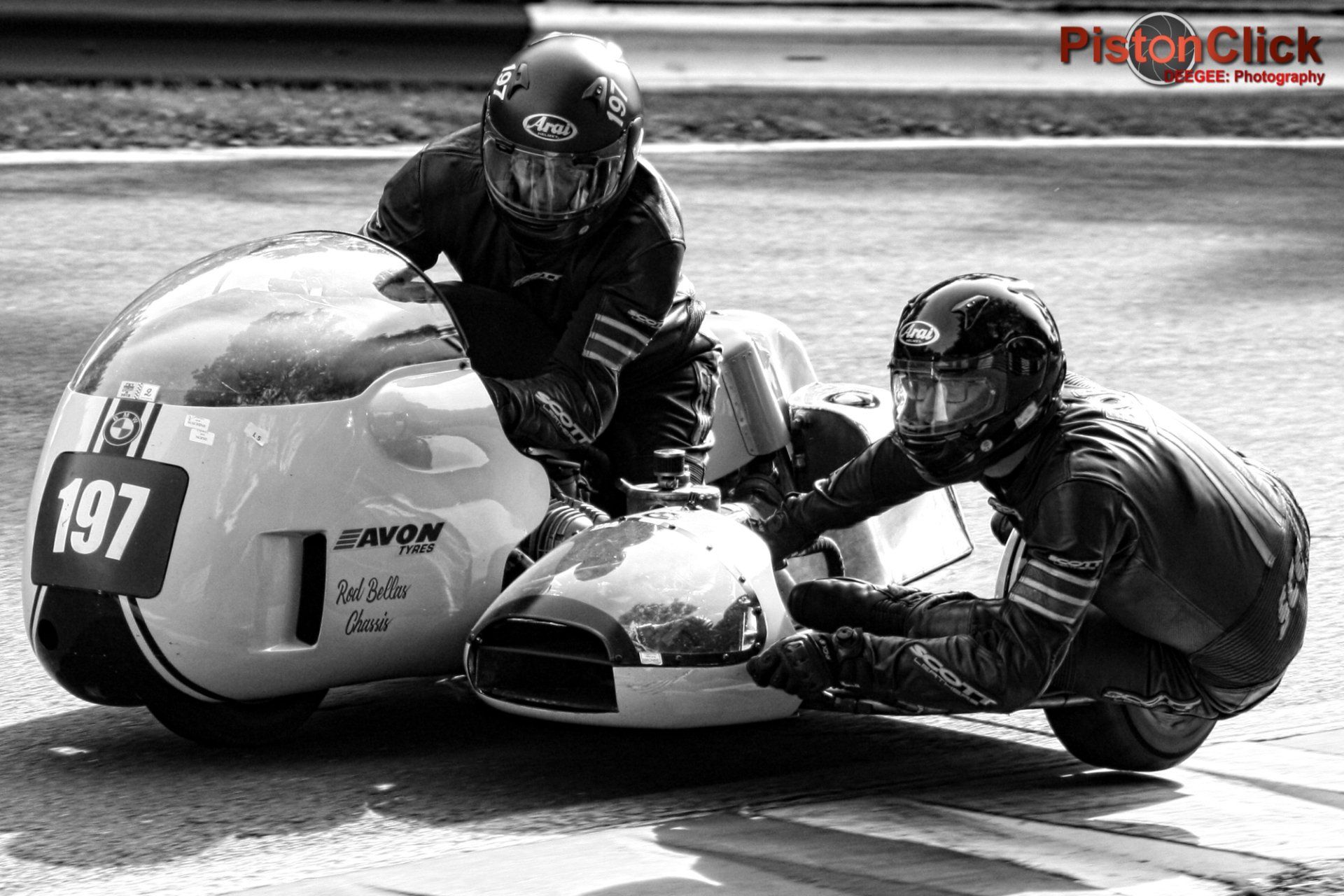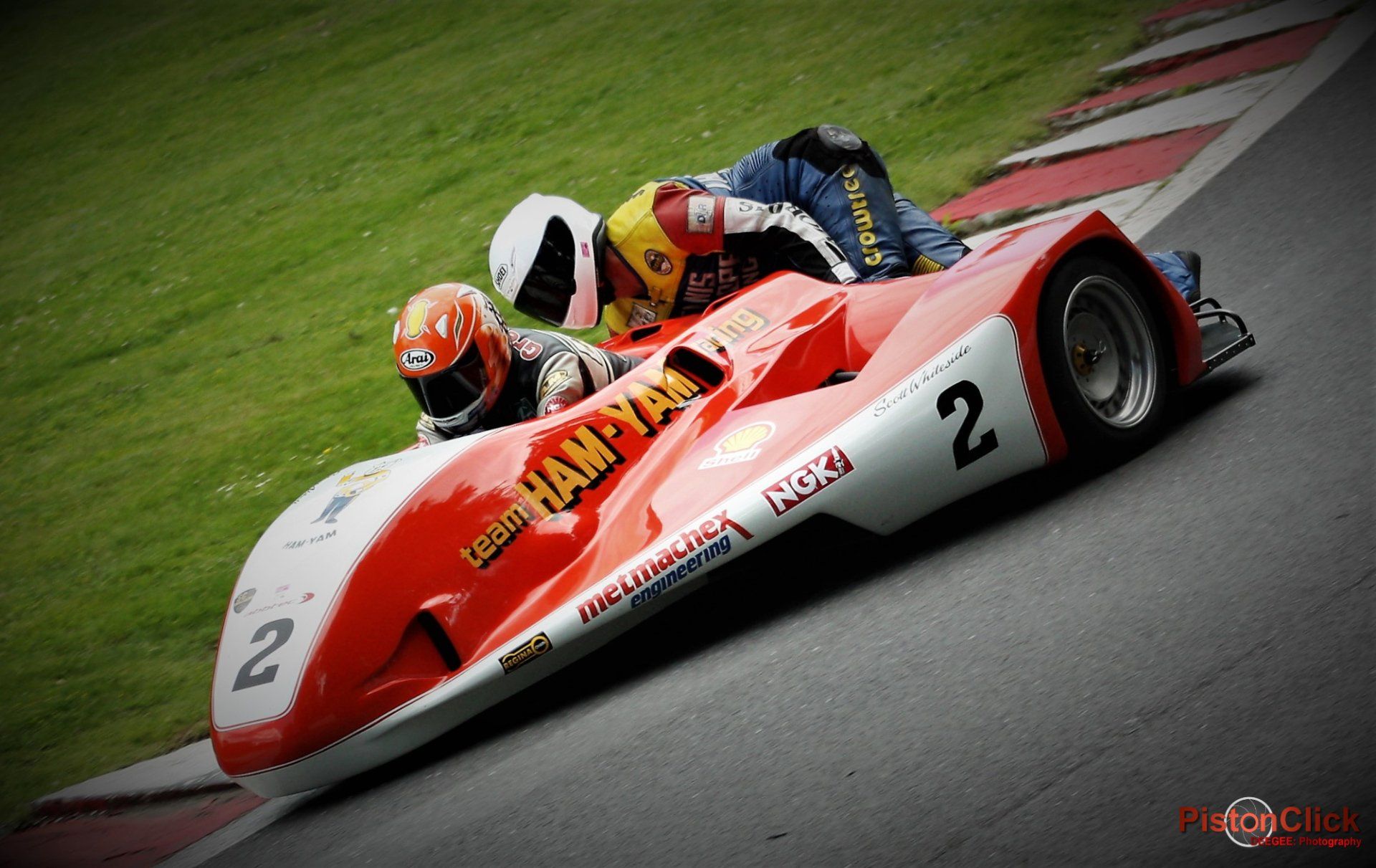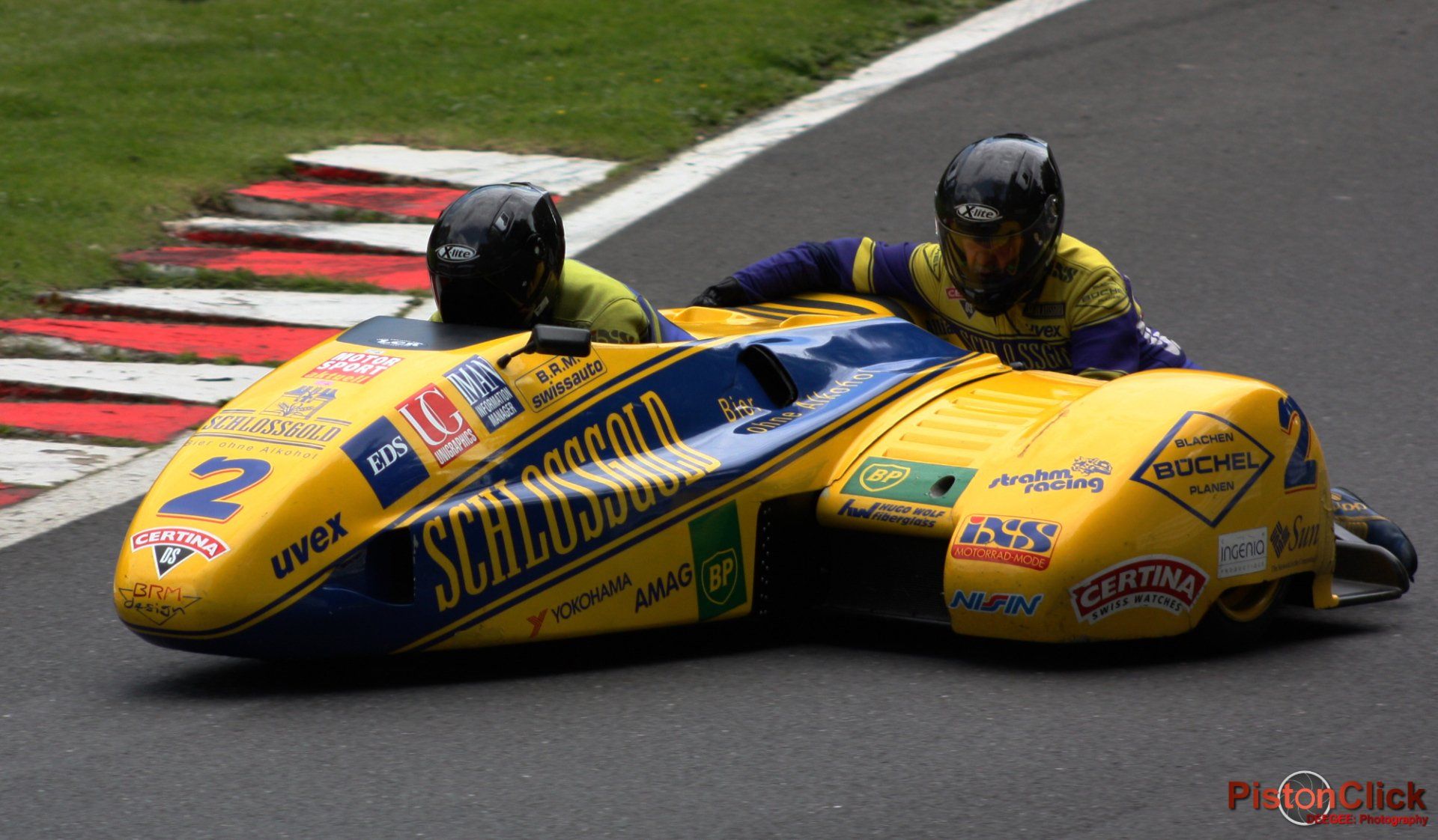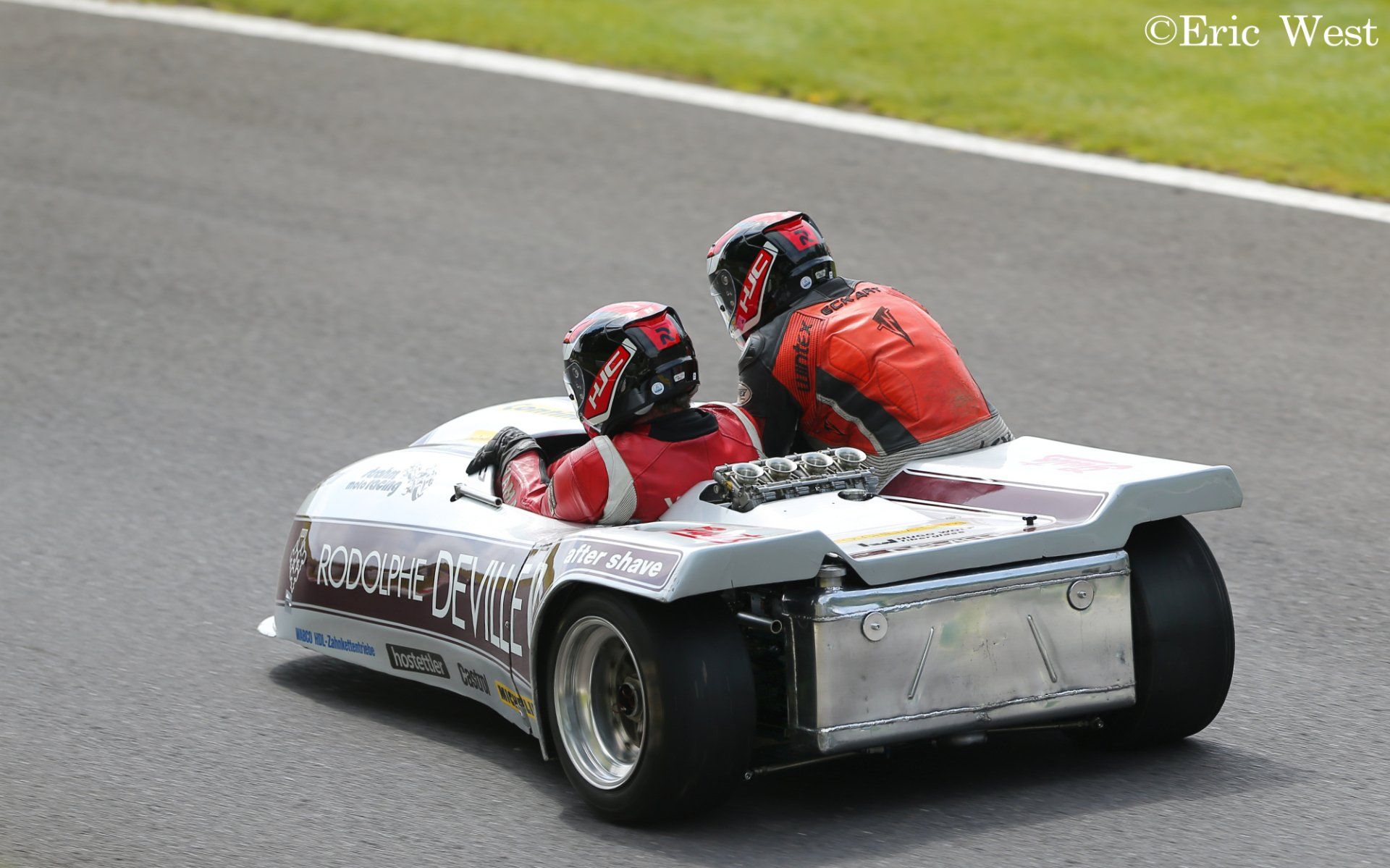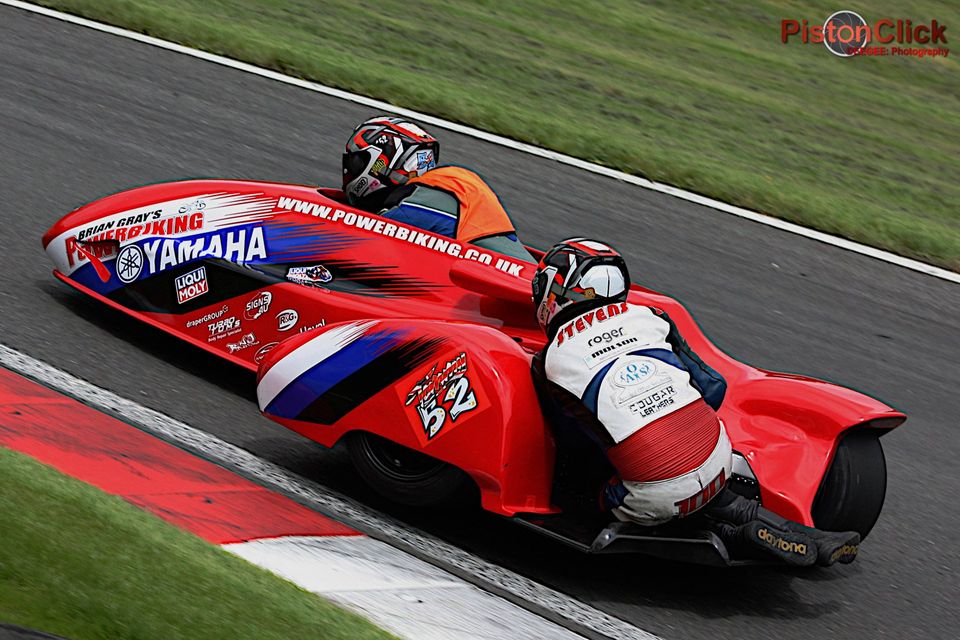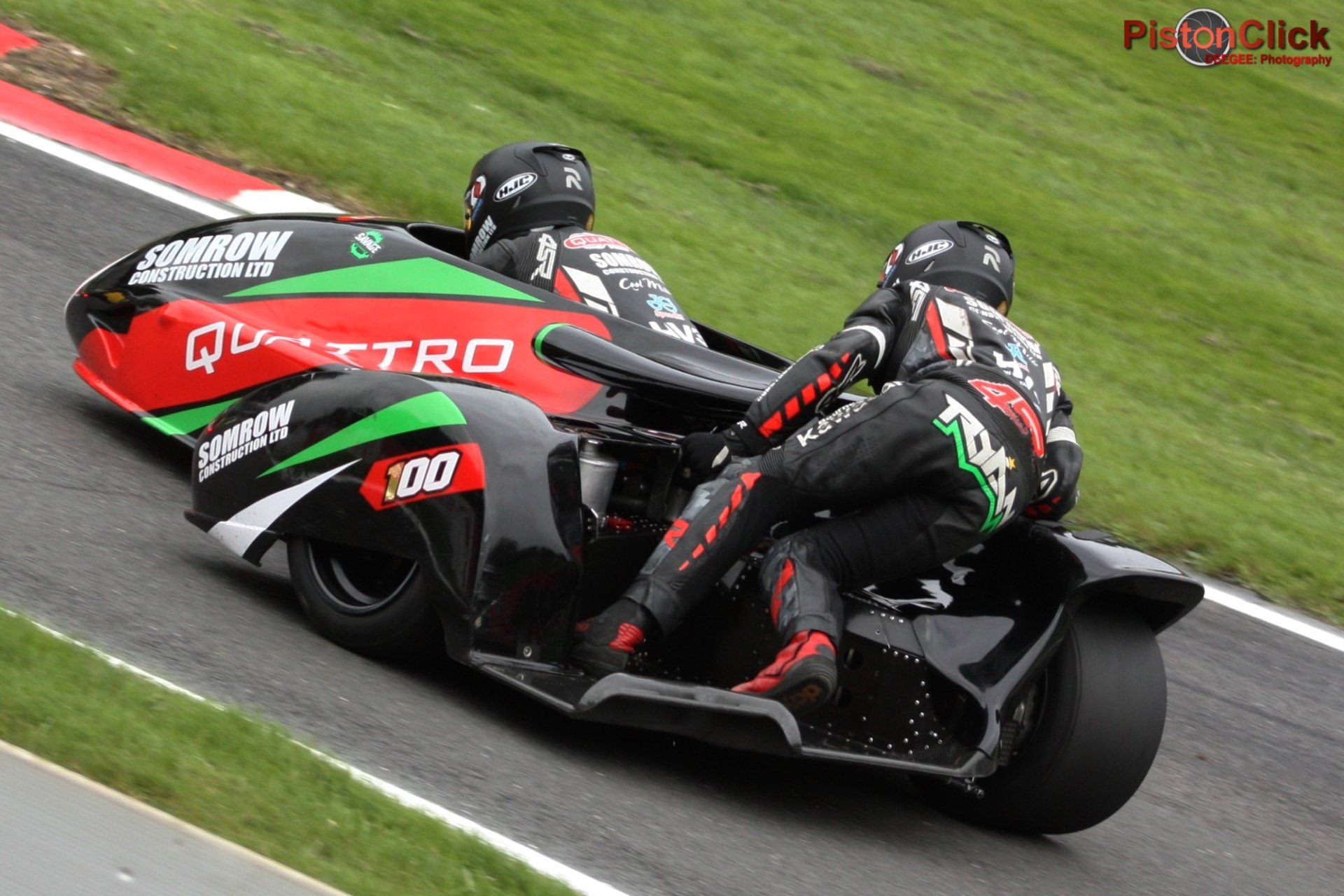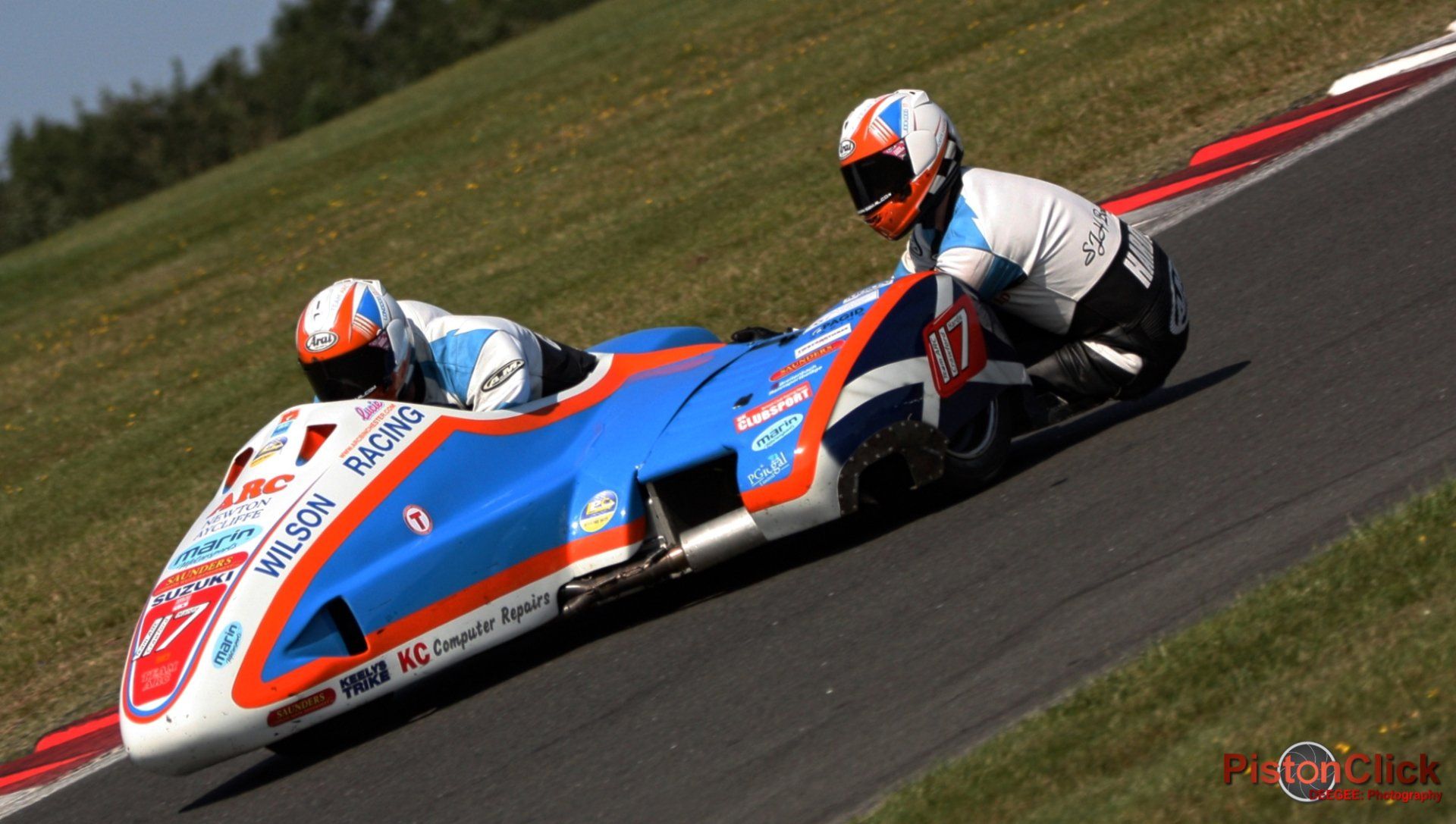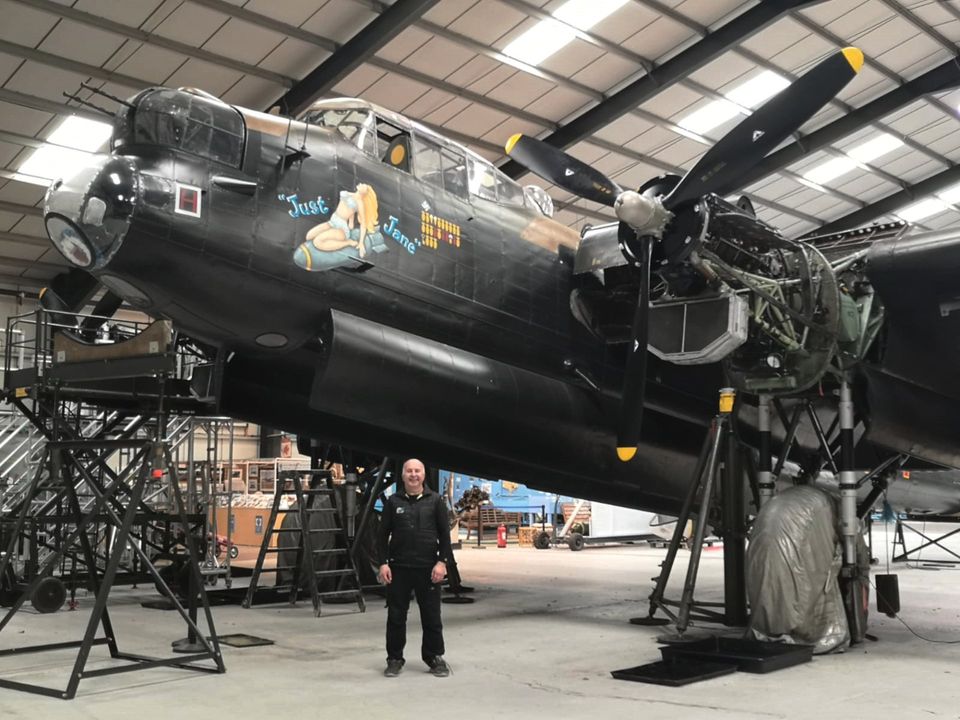3 Wheels, 2 Participants, 1 Machine, Nothing Like It
My favourite form of motorsport – Sidecar racing
Report by David Gowshall
1 April 2021
The last race of the September International meeting held every year at Cadwell Park during the 1960’s, after a day of action involving solo superstars, including the likes of Mike Hailwood, was always the Sidecar Handicap.
Six laps long, the event was, I think, in place to let the crowds who had come to see the solo stars begin, the mass exodus from the circuit, and stagger what was the chaotic exit of 60,000 fans, reducing the traffic jams as much as possible. The prize money on offer was a few pounds but the race gave the opportunity for the crews normally relegated to the back of the field to enjoy the limelight up front and have a chance of a rare victory.
The principle behind the race was the lap times taken for the main Sidecar race earlier in the day were recorded, and the outfits started in reverse order, taking these times into account.
One particular year, when I went along as a young lad (as I did every September with my Dad) stands out in my memory, as it was decided we would not join the throngs of spectators leaving the circuit as usual, but stop to watch the sidecar action.
The race started as the sun set on what had been a thrilling day's racing, and as the crews set off from the grid in turn, I found my attention was caught by a white outfit with the sidecar on its right-hand side, unlike all the others in the field, which sat very still on the grid.
I asked Dad if the outfit had broken down, but he told me to be patient. Minutes seemed to pass, when finally, long after all the other crews had left the line, and as the first outfits were negotiating Hall Bends, the white sidecar with a large number 1 prominent on its front, was flagged off from the start line.
As I stood with my Dad alongside the Mountain, I watched all the crews pass, and waited, with interest, for the white outfit to appear for the first time.
Sure enough it crested the Mountain, but I couldn’t help notice its passage round the left / right combination before the famous incline, was different to all the previous competitors.
Firstly, it was going noticeably faster, it seemed to be gliding over the surface of the road, and the two occupants of the machine were “as one”.
I was duly impressed and stood transfixed as the outfit sped towards Hall Bends before disappearing into the woods.
I eagerly watched as the white sidecar sped down the Start / Finish Straight beginning its second circuit before making the climb through Coppice and out of my sight, and waited for its return to the Mountain for a second time.
I very nearly missed it this time though as it came past earlier than I expected, before at least five or six other outfits had even appeared, seemingly gathering even more pace.
Lap three came and I watched in amazement as the white machine was now battling it out with the midfielders.
I watched laps four and five with progressive excitement and whilst its progress was still forwards in terms of track position, the pursuit of the leading five or six crews looked hopeless.
I watched eagerly as the leaders came round for the last time. Amazingly, the white machine with its right-hand sidecar was now in fourth place. Another place was gained as the leaders approached the first right hand element of Hall Bends. Up to third. After what seemed an age, the first two outfits, one of which I could see was white, appeared on the downslope from Barn Corner, virtually alongside one another.
A photo finish!!!
I awaited the announcement of the winner over the crackly loud speaker system and loudly cheered when it was announced number one had won.
Starting two minutes after the first outfit had set off, in just six laps, this outfit, the wheels of which never seemed to touch the ground at any point during its progress, had passed every other sidecar in the race.
I listened intently for the names of the two “riders” of this machine, whose balletic performance had held me spellbound for the last six laps of action.
The names Max Deubel and Emil Horner were announced. Their names and that comic-book hero performance, that had held my un-divided attention for six circuits of Cadwell Park, remain etched on my mind some fifty+ years later, and were the start of what has been a life-long interest in sidecar racing.
The Deubel / Horner combination, riding their BMW, won the World Sidecar Championship four years in succession between 1961 and 1964, won 3 Sidecar TT’s, and were the first crew to lap the Isle of Man TT course on a sidecar at an average speed in excess of 90 mph.
Motorcycles are perilous enough to ride at speed without travelling inches above tarmac that will happily remove your skin should the two of you meet.
Sidecar racing is one of those sports that might at first seem like a novelty, and though the community of racers in the discipline is small and tight-knit, it’s certainly not a just a few clowns doing something silly.
It is and has always been a very serious ordeal to race bikes in this fashion.
Even outsiders can, at a glance, tell that sidecars, particularly earlier versions, make an awkward platform for a racing vehicle.
The most obvious deviation from normal race machines is that sidecars are asymmetrical – the unique layout of a sidecar meaning it actually corners differently in one direction than the other, which drivers (often called “pilots”) have to account for in every turn.
In addition, the entire vehicle will “pull” under both acceleration and braking (toward the sidecar under acceleration, and away from it under braking.)
These are all unique challenges of racing a “lop-sided” race vehicle - ones that drivers or riders in any other car or motorcycle-based race format simply do not have to consider.
But the most fascinating and unusual part of sidecar racing is the role of the passenger (typically called a “monkey”) who provides the solution to all the previously mentioned challenges posed by the asymmetrical vehicle.
The very existence of a passenger in a race vehicle, especially a motorcycle, sounds bizarre, but there is a very good reason they are there. Their job is to clamour all over the machine, shifting their body around to modify the weight distribution on the machine, and compensate for the unevenness in the handling of the sidecar.
Sidecars do not lean into turns like solo machines do, so the sidecar passenger is required to hang off the edge of the sidecar to allow it to speed through corners in either direction, then duck out of the way in the straights to be as aerodynamic as possible. And they also have to do this smoothly, to not upset the chassis as the pilot steers the bike!
The toughest challenge for the passenger, though, is under the powerful force of braking, in which they have to hang on, while also creating drag to help slow the bike.
The result provides some pretty stunning shots !!
Sidecar racing is thriving today, but the origins of the sport in its official capacity go all the way back to the late 1940s.
In 1949 the first Sidecar World Championship was held, when sidecars were more or less screwed onto the side of competition bikes.
The outfits raced, where a sidecar was attached to a conventional solo motorcycle, could best be described as "scaffolding on wheels". Early development focused on reducing the overall weight, providing a flat platform for the passenger, and reducing drag around the sidecar wheel and at the front of the sidecar platform.
These early sidecars were of course much less balanced than today’s, and to overcome this issue the bikes got lower and lower until the rider was practically laid along the length of the machine.
Dolphin and dustbin fairings provided streamlined enclosures for the sidecar outfits.
A pioneer in this area was Eric Oliver, who was the winner of the first three years of the championship (1949 – 1951), and who worked on the development of successive experimental racing outfits.
The BMW Rennsport RS54 engine powered to 19 straight constructors titles from 1955 to 1973, the most by any engine, with all German crews, including the Duebel / Horner and Enders / Engehardt combinations, who took 10 titles between them, taking every title during that period.
The exception was the 1965 and 1966 seasons, when the Swiss / British crew of Fritz Scheidegger and passenger John Robinson triumphed as champions, albeit still BMW mounted.
Sidecars as a general mode of transport on the roads were popular in the early 50’s, but as small cars became more prevalent the public appeal of sidecars faded in the 60’s.
However, the development of sidecar racing continued unabated, and by the 1970's things were getting seriously quick.
In an effort to take the sport to the next level. Sidecar technology, helped by imaginative engineers, began to change.
That change began when George O'Dell won the championship using a Hub-centre steering sidecar (built by Rolf Biland) called the Seymaz.
The following year Biland took things one step further by winning the championship in what was basically a rear-engine, rear-drive trike.
The controversial outfit was deemed to be too close to motor car racing and did not require much participation from the sidecar passenger, who just had to sit in the rear of the vehicle. As a consequence, the FIM responded by splitting the sidecar championship into two competitions:
- B2A for traditional sidecars
- B2B for what were designated “prototypes”
Thankfully, as far as I’m concerned, the FIM reacted further by simply banning “prototypes” for the 1980 season, following continuing concern that passengers were becoming non-active participants, and the machines were ceasing to resemble motorcycles.
However, after protests from the teams, the FIM reversed its decision and reached a compromise. “Prototypes” would be permitted to race subject to the following rules:
- it must be a vehicle that is driven only by a single rear wheel
- it must be steered by a single front wheel
- it must be steered by a motorcycle handle bar not a steering wheel
- it must require the active participation from the passenger
The 1981 rules remain largely unchanged to this day and the “prototypes” conforming to these rules have become the “norm”, although trikes or cyclecars are still banned.
Under the FIM regulations, "rider" applies equally to the driver and the passenger on a sidecar.
The design of outfits, which has remained virtually unchanged since the 1981 ruling, sees the driver / pilot positioned kneeling in front of the engine with hands near the front wheel, while the passenger moves about the platform at the rear transferring their weight from left to right according to the corner and forward or back to gain traction for the front or rear.
The passenger also helps the driver when it comes to drifting. The two must work together to be a successful team.
All chassis are purpose built and owe more to open wheel race car technology, with wide, flat profile tyres. They are sometimes known as "worms" for obvious reasons.
Sidecar racing has been dominated since 1981 by British “pilots” including Darren Dixon, Steve Webster, Tim Reeves and the Birchall brothers, Ben and Tom, who have won 20 of the last 28 championships contested.
In 2017 the engine capacity of Formula 1 sidecars taking part in the World Championship, was reduced from 1000cc to 600cc. This was a conscious effort by the FIM to attract more participation from racers who still preferred the traditional, smaller Formula 2 chassis.
By reducing the engine size, it was hoped that this would mean competition on more equal terms. Nevertheless, the 2017 championship was still dominated by competitors using the F1 chassis.
Despite this, Formula 2 Sidecars remain popular in several countries, more particularly in the United Kingdom. The smaller, less developed outfits, which bear more resemblance to the outfits which raced prior to changes in the late 70’s and early 80’s, are generally used in true road racing events like the Isle of Man TT races.
Despite their lower top speeds, these machines retain better manoeuvring capabilities.
In the British Championship the Formula 1 challenge has been dominated by the Santander team over recent years, with youngster, Todd Ellis, partnered by the experienced Chaz Richardson, who are both based just ten miles from my home, beating all the established stars to win the 2019 British Championship title.
And in a COVID curtailed 2020 season Steve Kershaw and passenger Ryan Charlwood took the championship honours.
2021 is set to be a bumper year for sidecar fanatics like myself and my youngest daughter Lauren (who has apparently inherited my fascination with these three-wheeled machines), with the British Championship taking in 17 races spread over 9 rounds (two of which are at my local circuit Cadwell Park), one being the “not to be missed” Sidecar Revival meeting, and two scheduled rounds of the F1 World Sidecar Championship, which will take place in the UK, at Donington Park in July and Brands Hatch in October.
What’s more, it's highly likely the F1 World Champion will be British, with virtually all the leading crews chasing the title, based the UK.
Furthermore, the F2 British Championship looks likely to make a welcome return after it was wiped out by COVID last season.
My camera is all charged up ready. I can’t wait for the action to start.
Bring it on ………………………………………..
And finally ……………
Those who followed the “Grass Roots” reports featuring privateer Mick Pennell last season may have picked up a hint about something new for 2021 in the final report from Brands Hatch for the “Northern Monkey”.
That hint of things to come has turned into reality over what has been a very busy winter for Mick, who having enjoyed competing in both the CRMC and Bemsee championships on solo machines with significant success since 2014, has gained a wheel on his bike, and is about to commence a full season as a sidecar “pilot”.
Joining up with experienced passenger Della Bufton to form M & D Racing, the pair will contest the CRMC Sidecar Championship on their 1000cc BMW engine MRE outfit, which has been meticulously prepared by Tim Chapman.
Having always dreamt of a chance to try out three-wheel racing, although in his younger years being a passenger is what appealed, Mick couldn’t resist the opportunity which presented itself at the end of the 2020 season to join the sidecar fraternity and is fully committed to what is a completely new adventure for him.
The crew plan to contest all 7 rounds of the CRMC Sidecar championship, and their season will get underway with a visit to Mallory Park on the weekend of the 8th / 9th May, before visits to Pembrey, Cadwell Park, Donington Park, Castle Combe, Anglesey and the season closer at Croft in October.
It will be a steep learning curve for sidecar novice Mick, who will be relying heavily on Della’s years of experience as the season commences, as there is effectively a new circuit to learn at every meeting.
COVID restrictions, albeit lifting cautiously, have placed serious restrictions on any pre-season testing, which would allow “The Northern Monkey” and “Buffy” to gel on their outfit.
However, a shakedown test, arranged today by Della with the owner of the Lincolnshire Aviation Heritage Centre at East Kirkby, the home of one of the only remaining Lancaster bombers “Just Jane”, has allowed them to complete a series of runs, which means they will not enter the season’s Mallory Park opener having never turned a wheel.
Upon arrival at the gates to the base, the pair took a moment to reflect at the monument erected in memory of the fearless young airmen of 57 & 630 squadrons, many of whom never returned, or the others who lived, only to go up and repeat the same brave feat again and again, day after day.
To have this first outing in such nostalgic surroundings generated a real feeling of camaraderie between the M & D pairing, and as the airmen before them had boarded their trusty “Lanc”, Mick and Della hopped aboard their BMW outfit, and overcame their nerves to complete a special day to remember and in the future to look back on, in so many ways.
As a result of what turned out to be a highly encouraging test session, the pair can now head to the two-day Mallory Park meeting, and look forward to practice, qualifying and competitive racing with confidence, which will enable them, hopefully, to gain some valuable “ride” time and a proper opportunity to bed the outfit in.
Rides at Mick’s favourite circuit Pembrey in South Wales in June (where he began his racing career) and both his and Della's home track Cadwell Park (July) follow.
It is hoped with three decent meetings completed the duo will start progressing up the field during the second half of their first classic race season.
You can share this report with your friends on social media.










